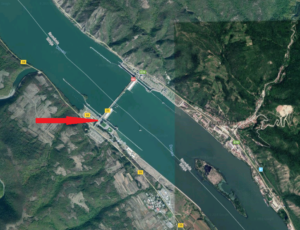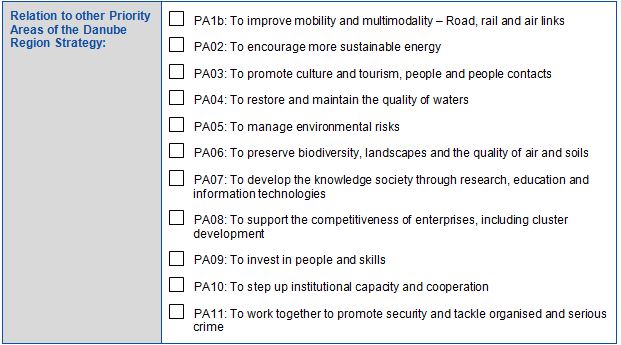BASIC PROJECT DATA
Project ID: PA1A071
NEED AND ADDED VALUE FOR THE DANUBE REGION STRATEGY
The hydroelectric dams Đerdap 1 and Đerdap 2 on the Danube River in Serbia are identified as critical sections, according to the Master Plan for IWW Transport in Serbia (2006). The navigation lock at the Serbian side of the dam at Đerdap 1 (river-km 943) has been in operation for about 40 years and the lock at the Serbian side of the dam at Đerdap 2 (river-km 863) for about 25 years.
The structural, mechanical and electric installations, which are necessary for locks operation, are in poor condition due to the lack of maintenance and as a result of economic sanctions and limited budgets. These locks have been in operation almost constantly and uninterruptedly and wear and tear occurred to a large extent. The present state and conditions of the navigation locks are subject to breakdowns which result in a complete closure of national and international inland navigation traffic.
The Iron Gate I navigational lock will be rehabilitated and upgraded within the next years. The Iron Gate I navigational lock was erected in 1972 and its’ infrastructure components overreached their technical and economic life expectancy of 40 years. The current lock operations are characterized by unreliability of the infrastructure components, jeopardized safety of navigation and increasing maintenance costs (which is common for technical resources that overreached their life expectancy). As the consequence, frequency of occurrence of closures of operations has increased and average waiting time for vessels is longer, resulting in unpredictable traffic conditions and planning horizon for the industry.
The reconstruction and upgrade of the Iron Gate I navigational lock will contribute to the improvement of mobility on the Danube River. It will increase the efficiency, reliability and the competitiveness of the Danube waterway, as the part of the Trans-European Transport Network (TEN-T).
OBJECTIVE(S) OF THE PROJECT
The project will improve reliability of the navigation lock infrastructure, eliminate and prevent occurrences of long closures, shorten the lockage cycle, reduce waiting time for vessels and reduce O&M costs.
PLANNED PROJECT ACTIVITIES
The project of reconstruction and upgrade of the Djerdap I (Iron Gate I) navigational lock will consist of major works on hydro-technical structures and on electro and mechanical equipment, including: upgrade of the equipment in electro-hydraulic drive door and shutter with the management system, reconstruction of the equipment in electro-hydraulic drive crane rails, reconstruction of the cable channels along the lock chamber, upgrade of the command tower, adaptation of drive storage, improvement of the traffic light signalization, reconstruction of the heating and air conditioning in the mechanical room, rehabilitation of the external and internal lighting, renewal of the equipment in the fixed fire protection systems, reconstruction of the sectional shutters, reconstruction of the electro-hydraulic pliers, refilling of sediment in downstream fore-dock area, rehabilitation of outage double doors, overhaul of outside cranes and upgrade of the floating cleats.
Independent supervision of works has been envisaged, in order to facilitate timely execution of works. By implementing such integrated activities, the overall technical life of the Djerdap I navigational lock and its functional performances would be upgraded and assured for the following period of 20 years, contributing to provision of good navigation status.
(c) google maps
TRANSBOUNDARY IMPACT
Having in mind that Danube navigation is highly internationalized, in 2014, 83% of the overall transport operations on the Danube River had an international character (being export, import or transit operations). Implementation of the project of reconstruction and upgrade of the Iron Gate I navigational lock would generate region-wide benefits, influencing the majority of users of the Danube waterway and by that all Danube riparian countries.
PROJECT BENEFICIARIES / TARGET GROUPS
Main beneficiaries are the Ministry of Construction, Transport and Infrastructure and HEPP DJerdap I, the operator of the navigational lock. Main target groups are shipping companies and logistics using the Danube waterway.
STATUS AND TIMEFRAME
Start date: 01.07.2017
End date: 31.03.2022
NOTES
Project design and preparation of tender documentation were finished in 2008.
FINANCING
Total budget: EUR 28,510,000 (potentially EUR 33,510,000)
EU funds: EUR 11,404,000 funded by Connecting Europe Facility (CEF) 2014 – 2020
National funds: EUR 17,106,000
PROJECT TEAM
Project leader: Republic of Serbia – Ministry of Construction, Transport and Infrastructure
(website: www.mgsi.gov.rs)
Address: Nemanjina 22-26, 11000 Belgrade / Republic of Serbia
No additional partners involved.
PROJECT ENVIRONMENT
PROJECT CROSS – REFERENCE
The project is complementary to the following projects which are already implemented or are under implementation in Serbia:
- Master plan and feasibility study for Inland waterway transport in Serbia (2006)
- Tender documentation for capital overhaul, adaptation, reconstruction and replacement of equipment and installations of the navigation lock at HPP Djerdap 1 (2009)
- Implementation of RIS in Serbia (2013)
- Preparation of necessary documentation for river training and dredging works on critical sectors in Serbia (2014)
- Removal of UXO (2014)
- Consctuction of new Zezelj bridge in Novi Sad (on-going)
- River training and dredging works on critical sectors in Serbia (ongoing)
- Implementation of navigation monitoring system on the Danube River (ongoing)
- FAIRway Danube (ongoing), etc.
STRATEGIC REFERENCE
International strategic framework: EU Strategy for the Danube Region
National strategic framework:
- Inland waterway transport strategy for the Republic of Serbia for the period 2015-2025
- General Master Plan for Transport in Serbia (2009)
- Master Plan for IWW Transport in Serbia (2006)
RELEVANT LEGISLATION
Serbian legal framework: Law on Navigation and Ports on Inland Waterways
International legal framework: International convention on the navigation regime on the Danube River, Danube Commission Recommendations, AGN, TEN-T guidelines, SRB-ROM interstate agreement
OTHER
Completed studies which created foundations for the execution of the project are: Master plan and feasibility study for Inland waterway transport in Serbia (2006) and Tender documentation for Capital overhaul, adaptation, reconstruction and replacement of equipment and installations of the navigation lock at HPP Djerdap 1 (2009).
EUSDR EMBEDDING
EUSDR COMPLIANCE
META DATA
Data provided by: Ivan Mitrovic (Plovput, Serbia) – 23.01.2017
Download pdf




